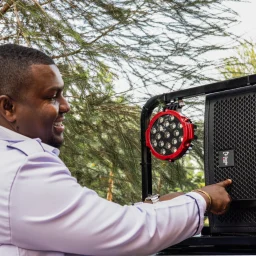
Choosing the right sound system for your church isn’t just about loud speakers — it’s about clarity, balance, and reliability. A well-designed system ensures that everyone, from the front row to the back, can hear the message and music clearly. Over the years, I’ve seen how powerful sound can transform worship, enhance connection, and improve overall experience.
1. Understand Your Space:
Every church is different. Some are wide and open, others tall and narrow. The size, shape, ceiling height, wall materials, and even the seating arrangement can affect how sound travels. A small church may only need a couple of well-placed speakers, while a large hall with high ceilings might require a distributed speaker system and acoustic treatment to prevent echo.
2. Choose the Right Equipment:
Sound systems generally consist of speakers, a mixer, microphones, amplifiers, and sometimes equalizers or signal processors. Invest in trusted brands like Yamaha, Behringer, and Shure for consistent performance. Wireless microphones are ideal for pastors or worship leaders who move around. Go for powered speakers in smaller churches to reduce the need for external amplifiers.
3. Prioritize Clarity Over Volume:
Many churches make the mistake of going for volume over clarity. But when sound is too loud or poorly balanced, it becomes tiring and hard to follow. Use EQ (equalization) settings to make sure vocals cut through the mix and that instruments don’t overpower the message. If your congregation includes older members, this clarity becomes even more essential.
4. Think Long-Term:
Consider scalability. Your church may grow in size or start livestreaming services, which adds new audio demands. Choose a system that can be upgraded over time without needing a full replacement. Modular setups are great for this. I always recommend systems that allow for future expansion.
5. Work with a Professional Installer:
While DIY setups might save you money upfront, poor sound can frustrate your congregation and reduce the impact of your services. A professional installer understands room acoustics, speaker angles, and power balancing. I’ve worked with churches of all sizes across Nairobi and surrounding regions. My approach includes an on-site assessment, recommendations based on your budget, and hands-on installation with testing.
If you’re planning to upgrade your church audio, reach out for a free site visit and consultation. Good sound isn’t a luxury — it’s a ministry tool.



